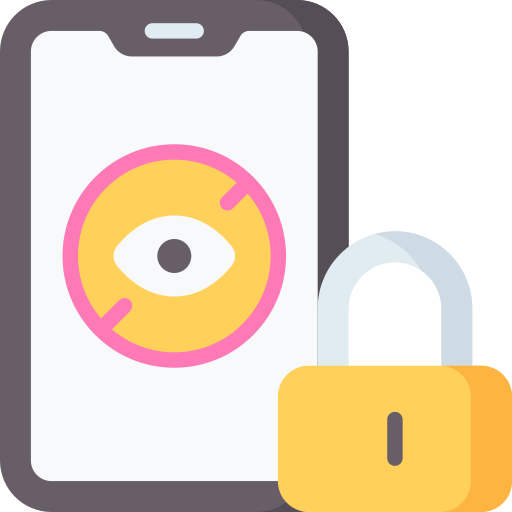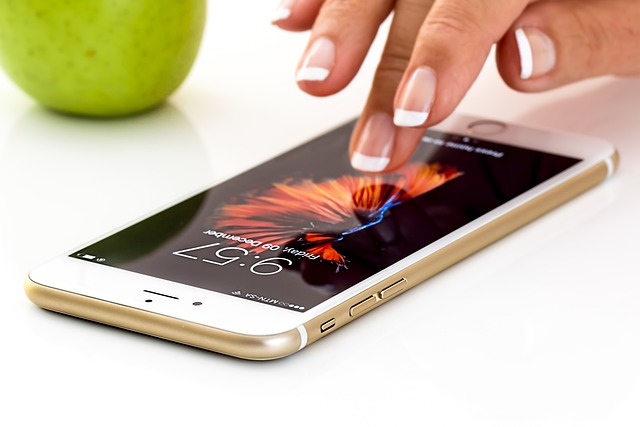The Importance of Managing Device Usage
In today’s digital age, where smartphones, tablets, and other devices are an integral part of our lives, it has become crucial to prioritize and manage our device usage. The impact of excessive screen time can be far-reaching and affect various aspects of our lives. From physical health issues such as poor posture and sedentary lifestyles to mental health concerns like anxiety and addiction, the consequences of uncontrolled device usage can be significant.
Moreover, excessive screen time can also have a detrimental effect on our relationships and overall productivity. Constantly being plugged in can lead to a sense of disconnection from the real world, affecting our ability to fully engage in face-to-face interactions. It can also result in a decrease in focus and attention span, making it difficult to concentrate on tasks at hand. By proactively managing our device usage, we can mitigate these negative effects and ensure a healthier and more balanced lifestyle.
Understanding the Impact of Excessive Screen Time
Excessive screen time has become a common issue in today’s digital age, with more and more individuals spending a significant amount of time on their devices. This increased reliance on screens can have a detrimental impact on both physical and mental health.
Physically, excessive screen time is often associated with sedentary behaviors and a lack of physical activity. Research has shown a correlation between extended screen use and an increased risk of obesity, as well as the development of musculoskeletal issues such as back and neck pain. Moreover, excessive screen time can lead to poor sleep quality, as the blue light emitted by screens can disrupt the body’s natural sleep-wake cycle. This can result in fatigue, decreased productivity, and difficulty in concentrating, affecting both daily activities and overall well-being.
Exploring the Negative Effects on Physical and Mental Health
The excessive use of devices and prolonged screen time can have detrimental effects on both physical and mental health. When individuals spend long hours engaging with screens, whether it be on smartphones, tablets, or computers, they often adopt poor posture and sedentary behavior. This can lead to a range of physical health issues, including obesity, back and neck pain, and eye strain.
Moreover, the impact of excessive screen time extends beyond the physical realm and can negatively affect mental well-being. Constant exposure to screens can disrupt sleep patterns, leading to insomnia and fatigue. Additionally, studies have shown that prolonged device usage is associated with increased levels of stress, anxiety, and even depression. The constant influx of information, notifications, and social media can overwhelm individuals, creating a constant need for validation and leading to addictive behaviors.
It is important to recognize the negative consequences of excessive screen time on both our physical and mental well-being. By understanding these effects, we can take the necessary steps to manage our device usage and prioritize our health.
Introducing a Solution for Healthy Device Usage
In today’s technology-driven world, managing device usage has become an essential aspect of maintaining a healthy lifestyle. The excessive screen time has been linked to various negative effects on both physical and mental health, making it crucial to find a solution that promotes healthy device usage. To address this issue, a revolutionary feature called the Screen Time Lock has been introduced, aiming to provide users with a way to manage their device usage effectively.
The Screen Time Lock feature offers a convenient and practical solution for individuals and families alike. By setting up and activating the Screen Time Lock, users can customize screen time limits for different user profiles, ensuring that everyone in the household can strike a healthy balance between technology and other activities. This feature goes beyond simply setting time limits, as it also allows users to manage app access and usage, further promoting responsible and mindful device usage. Furthermore, the Screen Time Lock feature not only benefits individuals but also encourages the development of healthy habits and fosters a better sense of balance in our lives.
How the Screen Time Lock Feature Works
The Screen Time Lock feature is a powerful tool designed to help individuals manage their device usage effectively. It allows users to set specific time limits for screen time and restrict access to certain apps once those time limits have been reached. By implementing this feature, individuals can take control of their device usage and promote healthy habits.
To activate the Screen Time Lock feature, users need to navigate to the device settings and locate the Screen Time section. From there, they can set their desired time limit for daily device usage. Once the limit is reached, the device will automatically lock, preventing further access to apps and features. This proactive approach helps individuals stay mindful of their screen time and encourages them to engage in other activities beyond their devices.
In addition to time limits, the Screen Time Lock feature also allows users to customize app access and usage for different user profiles. This means that parents can set stricter limits for their children, while granting themselves more flexibility. By managing app access, individuals can focus on their priorities and minimize distractions, leading to increased productivity and better overall device usage.
Setting Up and Activating the Screen Time Lock
When it comes to managing device usage, setting up and activating the screen time lock can be a game-changer. This feature allows individuals to effectively control their screen time and reduce excessive device use. To get started, simply access the settings menu on your device and look for the screen time lock option. Once you locate it, you can proceed with customizing the settings according to your needs. This may include setting time limits for certain apps, blocking access to specific websites, or even scheduling designated device-free periods. By actively engaging with this feature, you are taking a proactive step towards establishing a healthier relationship with technology and promoting a more balanced lifestyle.
Activating the screen time lock function is relatively straightforward. Once you have accessed the settings menu and selected the screen time lock option, you will likely be prompted to create a passcode. It is crucial to choose a unique and memorable passcode that will serve as the key to unlocking your device. Remember to keep this passcode secure and do not share it with others. Once you have established a passcode, you can begin adjusting the additional settings to suit your needs. For instance, you may want to set specific time limits for different apps or create a daily screen time allowance. The screen time lock feature provides you with the flexibility to customize your device usage and ensure that you are using technology in a way that aligns with your goals and values.
Customizing Screen Time Limits for Different User Profiles
When it comes to managing device usage, one size does not fit all. Every individual, whether it’s a child, teenager, or adult, has different needs and priorities when it comes to screen time. That’s why customizing screen time limits for different user profiles is an essential feature in promoting healthy device usage.
With this functionality, you have the flexibility to set distinct screen time limits for each user profile within your household. For instance, you can allocate more time for educational apps for your children, while setting stricter limits for social media or gaming applications. This customization helps create a balanced approach to screen time, ensuring that each user’s individual needs and responsibilities are taken into account. By tailoring screen time limits for different user profiles, you can encourage a healthy and productive digital lifestyle for everyone in your household.
Managing App Access and Usage with the Screen Time Lock
With the Screen Time Lock feature, managing app access and usage has never been easier. Once you have set up and activated the lock, you will have complete control over which apps can be accessed and for how long. This is particularly useful for parents who want to ensure that their children are not spending excessive time on games or social media platforms. By customizing screen time limits for different user profiles, you can tailor the restrictions to suit individual needs.
The Screen Time Lock allows you to effectively regulate the amount of time spent on apps, preventing overuse and promoting healthier device habits. Not only does this feature help reduce the negative effects of excessive screen time, but it also encourages a better balance between digital activities and other offline pursuits. Furthermore, by managing app access and usage with the Screen Time Lock, you can create a more focused environment for work or study, increasing productivity and concentration.
Encouraging Healthy Habits and Balancing Screen Time with Other Activities
Encouraging healthy habits and balancing screen time with other activities is essential for maintaining a well-rounded lifestyle. With the increasing reliance on devices for work, communication, and entertainment, it is easy to get caught up in endless scrolling and passive screen time. However, it is important to remember the importance of physical activity, social interaction, and mental well-being.
One way to encourage healthy habits is by setting designated times for device usage and other activities. This can help create a structured routine and ensure that screen time is balanced with other important aspects of life. For example, scheduling time for exercise, hobbies, or spending time with loved ones can help break the cycle of constant device usage. By prioritizing these activities, individuals can cultivate healthier habits and maintain a balanced lifestyle. Additionally, setting boundaries on device usage can reduce the temptation to mindlessly scroll, allowing for more intentional and purposeful screen time.
Tips for Successfully Implementing the Screen Time Lock Feature
The screen time lock feature can be a valuable tool in managing device usage and promoting healthy habits. To successfully implement this feature, it is important to establish clear guidelines and expectations. Openly communicate with all users about the screen time limits and the reasons behind implementing them. This will help create a shared understanding and minimize resistance.
Another tip for successful implementation is to lead by example. As adults, we must demonstrate responsible and balanced device usage ourselves. By modeling healthy habits, we can effectively encourage and motivate others to do the same. Additionally, regularly checking in with users and providing support can make the transition smoother. Offering alternative activities and finding ways to make screen time restrictions more enjoyable will further increase the chances of successful implementation.
What is the purpose of the Screen Time Lock feature?
The Screen Time Lock feature is designed to help manage and limit device usage, promoting healthier habits and balancing screen time with other activities.
Why is it important to manage device usage?
Managing device usage is important to prevent excessive screen time, which can have negative effects on both physical and mental health.
What are the negative effects of excessive screen time?
Excessive screen time can lead to various negative effects, including eye strain, poor posture, sleep disturbances, reduced physical activity, and decreased social interaction.
How does the Screen Time Lock feature work?
The Screen Time Lock feature allows you to set limits on the amount of time a device can be used or certain apps can be accessed. It helps enforce these limits by locking the device or restricting access once the set time or usage limit is reached.
How do I set up and activate the Screen Time Lock?
Setting up and activating the Screen Time Lock feature depends on the device and operating system you are using. Generally, you can find this feature in the device’s settings or parental control settings.
Can I customize screen time limits for different user profiles?
Yes, the Screen Time Lock feature usually allows you to create different user profiles with customized screen time limits. This is particularly useful for households with multiple users or families with children of different ages.
Can I manage app access and usage with the Screen Time Lock?
Yes, the Screen Time Lock feature often includes the ability to manage app access and usage. You can restrict or set time limits for specific apps to further control screen time.
How can I encourage healthy habits and balance screen time with other activities?
Along with implementing the Screen Time Lock feature, you can encourage healthy habits by promoting outdoor activities, family time, reading, hobbies, and other non-screen activities.
Are there any tips for successfully implementing the Screen Time Lock feature?
Yes, some tips for successfully implementing the Screen Time Lock feature include discussing the importance of healthy device usage with family members, setting realistic limits, being consistent with the rules, and leading by example with your own device usage.




